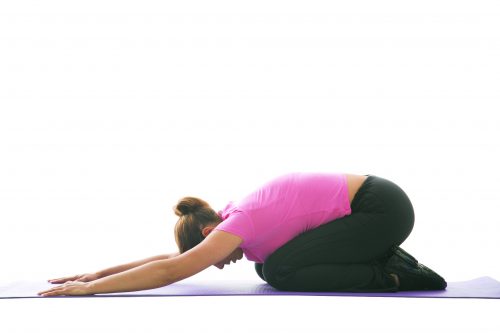
Lower back pain can impact every part of your life. But you don’t have take it lying down.
It can happen to anyone. You’ll be sitting at your desk working away, when suddenly, you feel a dull ache in your lower back. What do you do? More often than not, you’ll probably keep working and just ignore it. Or if it gets worse, you may get up for a quick stretch – hoping that will do the trick.
It’s highly likely that in our lifetime, we’ll experience some degree of lower back pain. About 70 per cent of adults have had back pain at some stage. Unfortunately, there’s no magic pill to cure lower back pain, but exercising for a strong, healthy back can be a preventative measure, which makes it a must for everyone.
What causes the pain?
Because there are so many things which can be the culprit of lower back pain, it’s not always easy to diagnose the cause. Most cases, however, tend to be triggered by a combination of overuse, muscle strain and injury to ligaments, discs and muscles.
Sitting for prolonged periods of time can cause lower back pain, too. When you sit at your desk, for example, your pelvis rotates backwards. This flattens your normally curved lumbar spine and increases the load through your vertebrae. And as you hunch forward towards the computer screen, the muscles deep in your back shrink, your abdominal muscles shorten, and your outer back muscles overstretch and weaken.
Small wonder many experts believe that spending long stretches of time sitting at a desk can have a big impact on the spine’s normal structure and the development of lower back pain.
How to get pain relief
When you have an aching back, bed rest may seem to be the most attractive option, but research has shown this isn’t the case. In fact, staying immobile may lead to more days off work, a higher intensity of pain and a stronger likelihood of disability. The best way to relieve back pain is the opposite of bed rest: exercise!
But a healthy lower back requires more than just strong back muscles – you need strong muscles in your torso and pelvis, too. These are called the ‘core’ muscles. When you have good core strength, muscles in your pelvis, lower back, hips and abdomen (both outer and inner) work in harmony, helping to protect and stabilise the spine.
There are two main types of activities for treating lower back pain: motor control exercises (which aim to improve the control and coordination of torso muscles), and graded exercises (which gradually increase your tolerance for the activity).
For both types of activities, the best exercises are those which work several core muscle groups at the same time, as this resembles how your body moves during day-to-day activities and takes some of the work off the spine.
To look after your back and strengthen your core, try the following exercises.
Ways to reduce back pain
It’s a good idea for beginners to see a qualified health professional before performing back exercises to ensure they have the right technique.
- Body positioning is vital during core strengthening exercises, particularly if you already suffer from back pain.
- When you’re performing core exercises, focus on the quality of the movement rather than quantity. Don’t worry if you can’t reach the number of recommended repetitions. Over time, you will be able to build up to a greater number of repetitions.
- When your muscles get tired, stop and rest, or change exercises.
- It’s perfectly okay to take a break when you need one.
- Remember to breathe slowly and steadily during all exercises.
- Hollowing: Suck your belly button into your spine, so your abdomen is ‘hollow’ underneath your rib cage. Hold for one minute, then release. Repeat five times.
- Curl-ups on Swiss ball: Sit on the midpoint of the ball, then slowly walk your feet out, away from the ball, until your lower back is resting on the ball. Keep your knees at a 90-degree angle. Place both arms across the chest. Brace by tensing your muscles (as if you were about to be punched in the stomach) and raise your trunk off the ball, stopping at 45 degrees. Hold for three seconds before lowering. Repeat two sets of 15.
- Floor bridge: Lie on your back with your knees bent and your hands resting just below your hips. Clench your buttock, before lifting it slightly off the floor. Hold for 15 seconds before returning back to the floor. Repeat 12 times.
- Alternate arm and leg raises: Lie on your stomach with your arms and legs outstretched. While looking at the ground, slowly lift your right leg and left arm towards the ceiling. Hold for five seconds at a comfortable height, before lowering your limbs back to the ground. Repeat with your opposite side. Complete two sets of 12 on each side.
Why back and abdominal exercises are good
- Reduce the likelihood and severity of back pain.
- Protect against injury by responding efficiently to stresses.
- Improve seated and standing postures.
- Help recovery from a back problem or after spine surgery.
www.healthyfood.com










